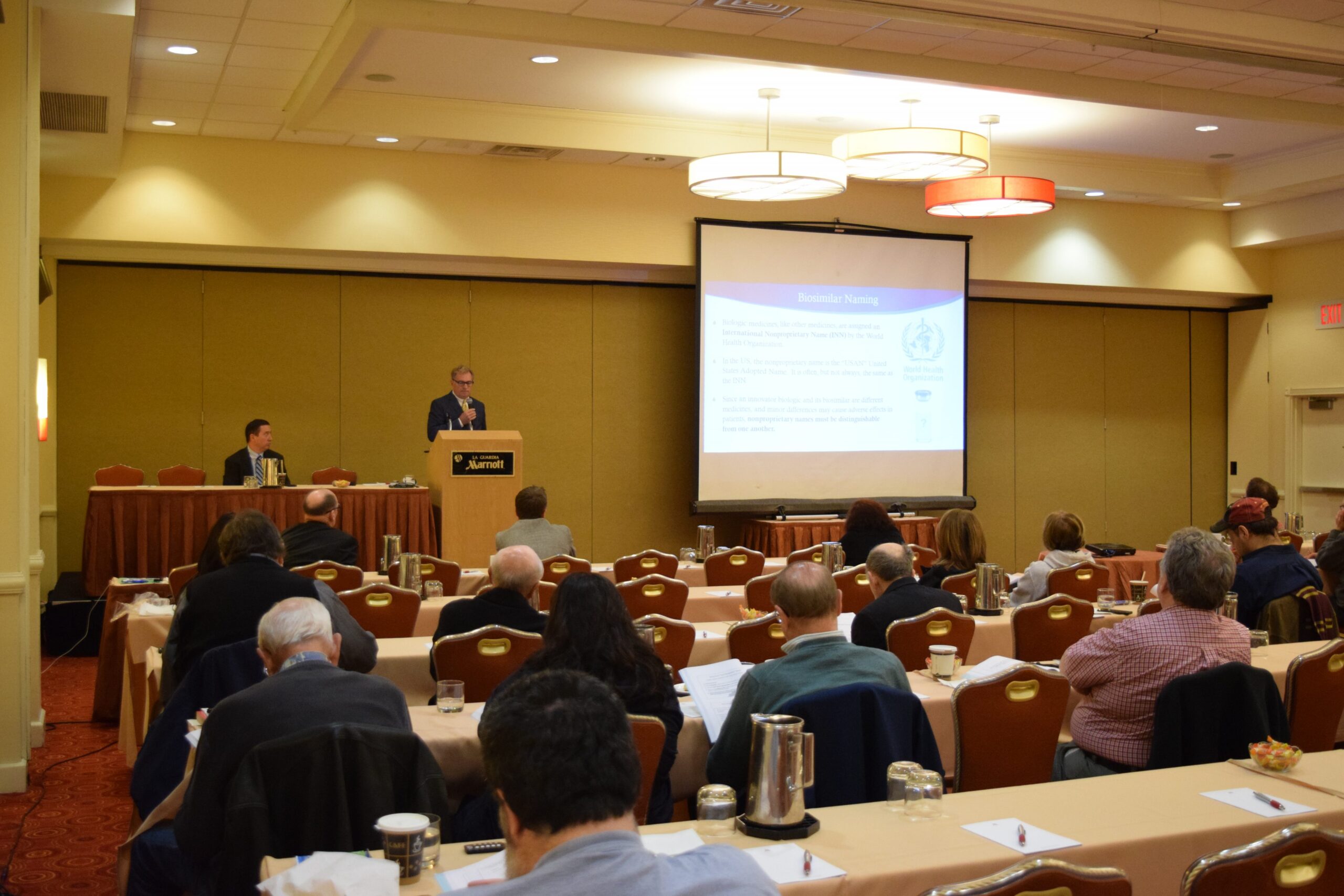Philip J. Schneider, MS FASHP
Associate Dean, University of Arizona College of Pharmacy
ASBM Advisory Board Chair
This past weekend it was my honor to participate in a continuing education course for 100 New York pharmacists on the topic of biologic medicines and biosimilars, including safety and regulatory considerations which affect pharmacy practice. The 5-hour course was held in partnership with the Long Island University College of Pharmacy (LIU-Pharmacy) and was an update to a similar course ASBM and LIU presented last year. You may read about this latest course in-depth here.
While preparing for the course, I was struck at how rapidly the biologic/biosimilar policy environment is changing, relative to many areas of pharmacy practice which are largely settled (such as the substitution practices regarding generic versions of chemical drugs). This makes biologic/biosimilar policy both a exciting subject on which to teach, and a critical subject on which a practicing pharmacist needs to educate himself or herself!
For example, when we first taught this course in March of 2015, the FDA had approved its first biosimilar, Zarxio (filgrastim-sndz) only a week earlier. Today, there are four approved biosimilars in the U.S., with more on the way.
When we last met, there was no formal biosimilar naming policy in place. Zarxio (filgrastim-sndz) used a distinguishing suffix based on its manufacturer’s name (Sandoz=sndz) at the request of the manufacturer, which felt random suffixes “didn’t make sense.” Yet in August 2015, the FDA issued Draft Guidance on Naming, which proposes a shift to random suffixes (similar to the system proposed by the World Health Organization), and the three most recent approvals currently follow this convention.
Debate continues on the relative merits of each system, but it remains ASBM’s position that memorable, meaningful suffixes are preferable for making products clearly distinguishable for one another. Pharmacists in particular have a long history of wanting to avoid look-alike or sound-alike names for different medicines, and indeed subsequent research by ASBM and others since the last course has shown that most pharmacists share this preference for meaningful suffixes.
Likewise, last year we spoke about the product labeling of Zarxio, and how it had raised several concerns among physicians, who like pharmacists rely on product inserts to advise patients on potential adverse events or help them choose between similar medicines. (In September 2015, ASBM surveyed 401 U.S. pharmacists and found they too share these concerns):
For example, the product did not identify itself as a biosimilar, or state to which product it was similar. (Biosimilars, unlike generics, are not identical to their reference products and may or may not be approved for- or may not have been evaluated in- the same indications as the originator. An identification that the product is a biosimilar would thus serve as an instant flag to a physician or pharmacist that it might not be approved to treat a particular condition.) The labeling did not state whether or not the biosimilar is interchangeable with its reference product (and would thus be substitutable by a pharmacist).

In March 2016, the FDA released Draft Labeling Guidance which has addressed some, though not all of these concerns, and discussion continues on how to craft more transparent, informative labeling that helps providers use biosimilars with confidence:
Another example: biosimilar substitution laws. At last year’s course, here is the map of the 12 states, shown in green, which permitted pharmacists to substitute an interchangeable biosimilar in place of the reference product, provided they communicate to the prescribing physician which product was dispensed:

And here’s that map today. The number of “green” states has more than doubled, from 12 states then to 25 and Puerto Rico today, due in some part to feedback from pharmacists, which has led to improved legislation:

And so biosimilar policy is rapidly evolving- as regulators, pharmacists, physicians, and patients educate themselves, listen to one another’s concerns, and then work collaboratively to address these and other policy challenges so these medicines can be brought safely to patients.
Who knows what further progress we’ll have made by next year’s course?
